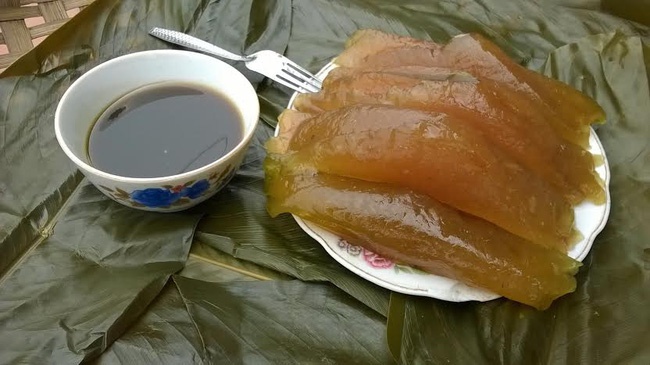French influence on Vietnamese cuisine as a whole is very, very limited . The common misconception that French cuisine has had major impact on the Vietnamese cuisine is due to the fact that the first dishes we chose to advertise to Western tourists were the few in Vietnamese cuisine that were really influenced by French cuisine. This decision was made based on the rule of marketing: when people say that they want to try something new, what they usually mean is that they want something familiar to them but still somewhat exotic and authentic to the culture that they want to try out. So, the popular Vietnamese dishes such as phở, cơm tấm (broken rice), bún bò Huế, etc., while still authentic and eaten in daily life by the average Vietnamese, are actually the few dishes that were really created under the influence of French cuisine on Vietnamese cuisine.
As a whole, the most notable French/Western influence on Vietnamese cuisine (of the top of my head) is the increased use of beef, the increased use of black pepper, and the introduction of chili:
Vietnam has always been traditionally an agricultural country. As a result of this emphasis on agriculture, cows, buffaloes, and horses were recognized as beasts of burden by the royal court from the 15th century till the start of the French colonization in the 19th century. The French taste for beef led to the lift of the 400-year slaughter ban by the puppet Nguyễn dynasty in the 19th century. This led to the creation of Vietnamese dishes utilizing beef in their recipes such as the famous phở, bún bò Huế (Huế beef noodle), bò kho (Vietnamese mix of Chinese beef stew and French beef stew), bò sốt vang (the Vietnamized version of the French beef stew in Bordelaise sauce), bò né (“dodge beef”, the Vietnamized version of beefsteak), bò lá lốt (grilled beef stuffed in lolot leaves, the Vietnamized version of the French version of the grilled beef stuffed in grape leaves of the Mediterranean/Middle Eastern dolma), etc. In addition to beef consumption, an increased consumption of meat in general in Vietnamese cuisine also happened as a result of the lift of the ban and contact with the French cuisine, which utilizes a lot more meat in its dishes.
Black pepper originated from India. Before the French colonization, Vietnam did have pepper, but its use wasn’t widespread. The French came in and organized a bunch of (very labor-intensive, very water-intensive, very soil-corrosive, very environmentally unsustainable, and very high in death rate of the workers/slaves) pepper plantations in the highlands of central Vietnam. In the modern day, with the advent of new agricultural techniques and technology, Vietnam is the largest producer of black pepper in the world, producing 39% of the world’s black pepper supply. The average Vietnamese household also adds black pepper to literally every dishes.
All chili species are native to the New World and were first brought over to Asia by the European trade network. In Vietnam, it was the French who brought and propagated chili through the chili plantations in central Vietnam. Thankfully, chili growing was much less labor intensive, water-intensive, and suffering-intensive than the pepper plantations. In the modern day, chili and chili sauce are important condiments used in daily dishes.
As for cook books detailing the Vietnamese cuisine before the French colonization, a quick google search netted these books:
Nữ Công Thắng Lãm by Hải Thượng Lãn Ông , detailing the northern Vietnamese cuisine in the 18th century.
Thực Phổ Bách Thiên by Trương Đăng Thị Bích , detailing peasant and royal cuisines in central Vietnam in at the end of the 19th century.
Sách dạy nấu ăn theo phép An Nam by Lê Hữu Công , detailing peasant and royal cuisines in southern Vietnam + 4 Khmer dishes + 9 Guangdong dishes at the beginning of the 20th century.
The Bộ Lễ section of the Hội Điển series, from the official records of the Nguyễn dynasty .
In addition, old Vietnamese recipes from before the French colonization also exist in:
The Bộ Lễ section of the Quốc Triều Hội Điển of the Lê Dynasty.
The memory and private family records of the Nguyễn ex-royal clan.
The inherited living memory of the populace both through folk songs and through oral tradition from ancestors to descendants. In fact, most common Vietnamese dishes you randomly find on the street in Vietnam are basically exactly the same as the version recorded in the aforementioned 18th century recipe book. E.g.: Bánh tro (“ash cake”), virtually unchanged since (at least) the 18th century.

Here’s an aggregated list of cook books about Vietnamese cuisine in general, from north to south, from royal to peasant, from the 18th century to modern recipes.

